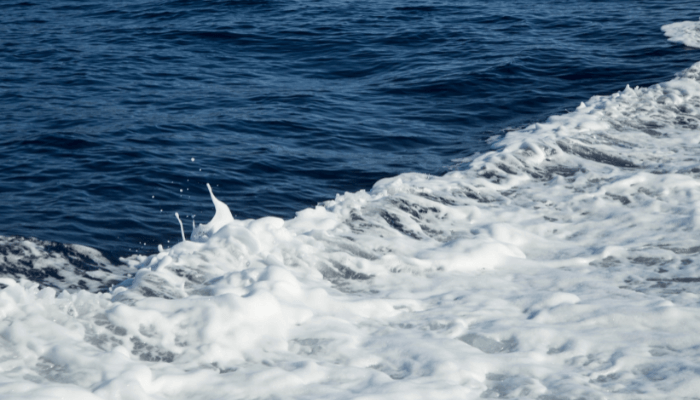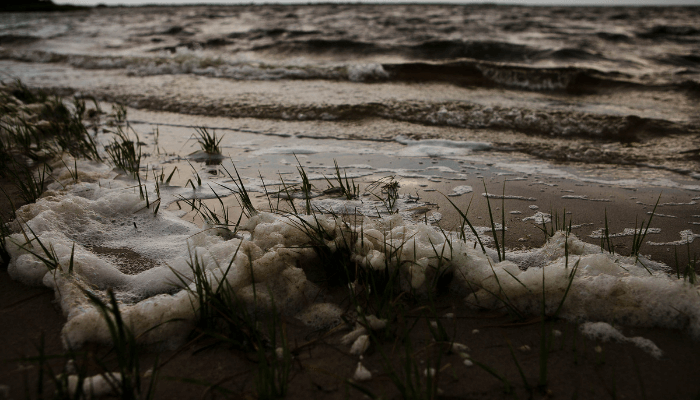What Is Sea Foam and How It Is Formed?
Seawater has dissolved salts, proteins, fats, dead algae, detergents and other pollutants and contaminants, including organic material and artificial matter. When powerful waves and tides churn them together, sea foam is formed on the water, and the foam is left behind when it lashes the shores.
It is seen as a white lathery substance that floats on the water’s surface and accumulates at the seashores. Seafoam appears in several parts of the world and continues to intrigue people.
The coast of Yamba, located in the South-east Australian state of New South Wales, is well-known worldwide for the natural phenomenon of sea foam. This phenomenon has put the town of Yamba on the global map attracting tourists and enthusiasts from all over – not just from other parts of Australia but also from other countries.
However, foam formation on the sea on the coast of Yamba is just one example. The phenomena are not native to one place or location and can be created anywhere in the world.

How is Sea Foam Formed?
The question of ‘how is sea foam formed?’ is the first that comes to people’s minds. The answer to this question would be that many aspects are involved while unravelling the intrigue behind this natural phenomenon.
First, two kinds of sea foam can be formed – White Seafoam and Red or brown-coloured foam.
The latter, sometimes referred to as the ‘Red Tide’, is caused by the presence of waste products created by human activities. Air, water, and surfactant form sea ocean foam or beach foam. A surfactant is a sticky molecule that attaches itself to the water molecule. It is a chemical and is derived from fertilizers, industrial wastes, and even ocean sewage.
Researchers also add that single-celled alga – phytoplankton – can cause the foam to take a reddish or brownish hue. Foam on the sea, excluding these causes, is white in tinge.

- Decomposing or decomposed materials from the seas, like plants, animals and excreta, are churned by the continuous movement of the tides and form cloistered bubbles of air, are retained beneath the sea waves and are whipped towards the sea shore because of the pull of the currents. These waves are frothy, and when they crash against the beach, the foam at the top is left behind, which causes the foam effect.
- Alternatively, single-celled alga, which is powdered finely, is regarded to be the cause of the white sea foam as their powdery substance emanates sea foam–forming protein, which in turn results in the formation of foam.
- Chemical waste discharges by industries and sewerage into the oceans and seas also cause the foam to form in the sea.
Dangers Because of Sea Foam
As already discussed, foam is formed as organic matter is tossed and churned by the waves. The majority of sea foam is not harmful to humans and is, in fact, an indication of a productive ocean ecosystem. However, when large harmful algal blooms decay near the seashore, they could hurt human health and the environment.
Also, dangerous marine creatures could hide in this froth and cause irreparable damage to the natives.
Even while an intriguing phenomenon, the foam on the sea indicates the more significant problems that could be caused to the populace living near the seashore. In the better interests of these people and for birds that can be saved, while natural foam-causing agents cannot be nullified or eliminated, the artificial-causing agents can very well be brought into control.
For instance, along the Gulf Coast beaches during the blooms of Karenia Brevis, people pop the sea foam bubbles; hence, the algal toxins become airborne.
The resulting aerosol can irritate the eyes of beachgoers and could cause health risks like asthma or other respiratory conditions. Scientists who study the causes of death of seabirds off the coast of California and the Pacific Northwest found that soap-like foam from a decaying akashiwo sanguinea algae bloom removed the waterproofing from birds’ feathers. Hence, the birds in contact found it challenging to fly and suffered from the onset of fatal hypothermia, which caused their deaths.
Frequently Asked Questions
1. What is seafoam made up of?
Seawater has dissolved salts, proteins, fats, dead algae, detergents and other pollutants and contaminants, including organic material and artificial matter. When powerful waves and tides churn them together, sea foam is formed on the water, and the foam is left behind when it lashes the shores.
2. Is sea foam harmful?
The majority of sea foam is not harmful to humans and is, in fact, an indication of a productive ocean ecosystem. However, when large harmful algal blooms decay near the seashore, they could have a negative impact on human health and the environment.
3. What are some of the benefits of sea foam?
Seafoam cleans the entire fuel system, fuel injectors, carputer passageways, intake valves, chamber deposits, and gasoline and diesel engines.
4. Is it safe to play with sea foam?
Most beach goes, whether children or adults, love to pop and splash into the thick sea foam found on beaches. However, be careful as dangerous creatures such as snakes might be hidden in the foam and bite or sting you.
5. Is it okay to swim in thick sea foam?
Although foam is not toxic, it could be dangerous if one swims in waters with thick foam, as inhaling it could choke a person or interfere with breathing. Sometimes stormwater can create a foot-thick foam that could be pretty dangerous.
You might also like to read-
- Real Life Incident: Ship’s Sea Suctions Choked With Fish
- Understanding Oil Spill at Sea: Drills, Prevention And Methods Of Cleanup
- Infographics: Safety at Sea
- 30 Best Gifts For Boaters And Sailors
- Sewage Treatment Plant on Ships Explained
Disclaimer: The authors’ views expressed in this article do not necessarily reflect the views of Marine Insight. Data and charts, if used, in the article have been sourced from available information and have not been authenticated by any statutory authority. The author and Marine Insight do not claim it to be accurate nor accept any responsibility for the same. The views constitute only the opinions and do not constitute any guidelines or recommendations on any course of action to be followed by the reader.
Do you have info to share with us ? Suggest a correction
Subscribe To Our Newsletters
By subscribing, you agree to our Privacy Policy and may receive occasional deal communications; you can unsubscribe anytime.



